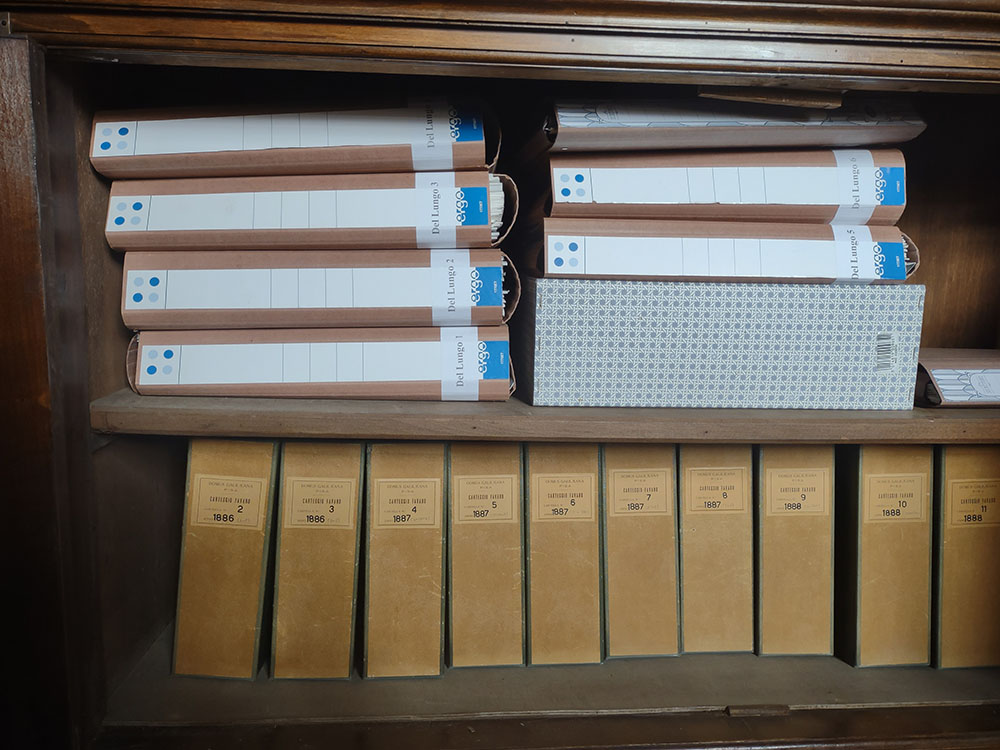Sebastiano Timpanaro Snr., the director of the Domus Galilaeana from its foundation, regarded as essential the acquisition of Antonio Favaro’s library and archive, then still in the care of the family, in order to make them a central nucleus of the institute’s patrimony. In this he enjoyed the full support of Giovanni Gentile, one of the most influential philosophers and intellectuals of the period, who was at the time a senator and the first (and in Timpanaro’s opinion unrivaled) president of the Domus. Negotiations with Favaro’s son Giuseppe, who taught anatomy at the University of Modena, had already begun prior to the inauguration of the institute in Pisa, but were destined to continue for a long time in part because Giuseppe Favaro was not a disinterested party. The increasing momentum of the war, particularly after the armistice on 8 September 1943, meant that Favaro’s books and papers remained at the Villa Barbariga at Fiesso d’Artico on the Riviera del Brenta, the summer residence of the Favaro family, and arrived in Pisa only after the war. By then Giovanni Gentile had been assassinated and Sebastiano Timpanaro Snr. himself died only a few years later when he was barely over sixty.
The proposal for a systematic study of the Favaro bequest did not engage the interest of those subsequently in charge of the Domus. While the books were absorbed into the institute’s collections, the archive was broken up: the correspondence was separated off and provided with its own catalogue that maintained the chronological order Favaro himself had established; the remaining collection was placed in a cupboard with no apparatus to enable any systematic analysis. Subsequently hundreds of newspaper cuttings were extracted and given a separate classification which was, however, devoid of any link between the individual items and their context within the collection as a whole. At more or less the same time, the heirs of Isidoro Del Lungo, who had been literary consultant to the national edition of Galileo, deposited a part of their father’s archive at the Domus, but due to the lack of even a rudimentary inventory the material could not be consulted.
Thanks to a collaborative agreement between the Domus Galilaeana and the Museo Galileo, the Favaro and Del Lungo collections have now been sorted, inventoried and digitised in their entirety, using both pre-existing shelfmarks where they exist and providing new ones for the remaining material in order to give an idea of the methods used to gather together and to arrange the enormous mass of data and documents employed in studies and editions at a time when there were no supporting technological aids. A computer application set up to access and contextualise data and information gleaned from the byways of personal archives makes possible targeted research for those who already have a deep knowledge of the subject and equally broader investigations for those who wish to develop a more general picture. It also simplifies the creation of user-defined indexes and facilitates the understanding of the video sections. In this way the foundations have been laid to enable a deeper insight into Favaro’s character and intellectual standing as well as his historical research and philological studies, so putting into practice Sebastiano Timpanaro Snr.’s plans, albeit in a landscape radically transformed by the advent of the digital world.


